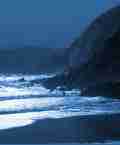 |
 | |||
|
THE CAMPAIGN FOR HOME RULE The nineteenth century witnessed the growth of conscious separatism between Ulster and the rest of Ireland. The effects of the industrial revolution in Ireland were confined almost entirely to the northern part of the country, strapping even closer its industrial and commercial dependency on Britain. The greater prosperity of the north and its economic structure increased its alienation from the rest of Ireland. The potato famine of the 1840s, the most far-reaching event in nineteenth century Ireland, had much more severe consequences in the south than in the north and had profound effects on political, economic and social developments there which were less dramatic in Ulster. Economic differences found a political voice when the campaign for the repeal of the Act of Union with Britain caused a petition to be organised as early as 1834 in Ulster against repeal and for a separate legislature in Ulster if a Dublin parliament was restored. In 1841, Daniel O'Connell, the champion of Catholic emancipation and repeal, visited Belfast. His coach had to avoid an ambush, the meeting hall was stoned, and his entourage required police protection to travel southwards. It was the Home Rule campaign in the 1880s which gave Protestant Ulster its organised basis and its tradition. Home Rulers campaigned for the establishment of a parliament in Dublin where elected members would have full control over Irish domestic affairs. The cause attracted the support of Irish liberals and in the general election of 1874, 59 Irish MPs committed to Home Rule were elected to parliament in Westminster. The Irish MPs formed the Irish parliamentary party but it was not until the election of Charles Stewart Parnell as leader in 1880 that the party became a cohesive group. With the Home Rulers often holding the balance of power in Westminster, Parnell bartered with the Whigs and ensured that Home Rule dominated Irish and British politics. Even after Parnell's death in 1891, Home Rule remained a contentious political cause for another fourteen years. As late as the general election of 1885, 17 out of 33 Ulster seats were carried by the Home Rule party. The next two decades transformed this picture and stiffened Ulster's resistance to Home Rule. The resistance was strengthened by the growing identification between Ulster unionism and the Conservative party in Britain. The basis of the new Conservative policy was an identification with Protestant fears, and particularly with Ulster. If the motive was frank political opportunism from the Conservatives, the Ulster Unionists were glad of such powerful support. Nevertheless, although this Conservative support was important, it was events in Ulster which gave the anti-Home Rule campaign its real power. Amid the outbursts against Home Rule by churchmen, Unionists, MPs and Conservative politicians, it was the Orange Order which emerged to provide the leadership and organisation to maintain the union. The Order's fortunes during the eighteenth century had been chequered; outlawed and abused on many occasions, it had survived. The anti-Home Rule campaign served to transform the Order from a disreputable group to a respectable organisation. The Order supplied the ready-made framework of an effective organisation for growing Protestant dissatisfaction, especially in Ulster. By 1905, it had played a major role in uniting disparate unionist voices within the Ulster Unionist Council - the coalition from which the Unionist party emerged. The Home Rule campaign was not confined to parliamentary strategies. The Irish parliamentary party which wanted to achieve Home Rule by legislative action, was at times complemented and rivalled by cultural and militant revolutionary groups. The Irish revolutionary tradition, represented by the Fenians from the 1850s, and later by the Irish Republican Brotherhood, loomed over the parliamentary campaign. It was strategically useful to Parnell as evidence of what would happen if Home Rule were to be rejected- but it became a serious and in the end a more powerful rival to the parliamentary party as public impatience grew. The formation of the Gaelic Athletic Association encouraged Irish sports and the Gaelic League promoted Irish language and literature. The renaissance of Irish culture was embraced with enthusiasm by nationalists throughout Ireland, just as the organisation of the anti-Home Rule campaign included branches all over the country. But as the crisis came to a head between 1906 and 1914, the quarrel was regarded in increasingly general geographical terms as one between the northern and southern parts of the country. The decade between 1912 and 1922 was momentous in Ireland. Civil conflict between north and south, where private armies were openly drilling, was averted by the outbreak of the First World War; the Easter 1916 Rising in Dublin and the guerrilla campaign shifted the spotlight southward. The Treaty of Versailles which formally sealed the end of the First World War recognised the principle of self-determinism and nationalism in Europe. However, the principles did not extend to Ireland. Even with the landslide victory for Sinn Féin in the 1918 general election, Ireland did not achieve independence. The fervour for independence was fired by public outrage in Ireland at the execution of the leaders of the 1916 Rising. In the War of Independence, the Irish Republican Army emerged to conduct a highly successful guerrilla campaign against police and troops. The British Prime Minister, Lloyd George, sought a compromise settlement in the Government of Ireland Act which became law in 1920. The Government of Ireland Act (1920) partitioned Ireland and created two states, one for the six northern counties and another for the remaining twenty six. The six counties selected were deliberately chosen: Antrim, Armagh, Derry, Down, Fermanagh and Tyrone. The reason for this deliberate selection was straightforward: the nine counties of Ulster held 900 000 Protestants most of whom supported union with Britain, and 700 000 Catholics most of whom wanted to end it. However in the six counties chosen to form Northern Ireland, the religious breakdown was 820 000 Protestants and 430 000 Catholics. In 1920, C C Craig, brother of James Craig, the first Prime Minister of Northern Ireland expressed the case starkly in the House of Commons: "If we had a nine county parliament, with sixty four members, the Unionist majority would be about three or four: but in a six-county parliament, with fifty two members, the Unionist majority would be about ten". It was this consideration which persuaded the Unionists to accept the six county area. Elections were held, with the Unionists winning 40 of the 50 seats in the north and Sinn Féin candidates elected unopposed in 124 seats in the south. Sinn Féin refused to sit in Westminster and formed the second Dáil Éireann in Dublin. In 1921, Sinn Féin and the British Government signed the Anglo-Irish Treaty which ended the War of Independence. The Treaty enshrined acceptance of the two separate states in Ireland. The Dáil voted in January 1922 on the Treaty, with 64 votes to 57 in favour of the Treaty. The Dáil members split over the Treaty, a split which was paralleled in the IRA. The pro-Treaty and anti-Treaty allegiances drove Ireland into a bitter Civil War which lasted until 1923. |
[ Back to top ]
All Material © 1999-2018 Irelandseye.com and contributors
